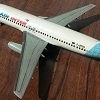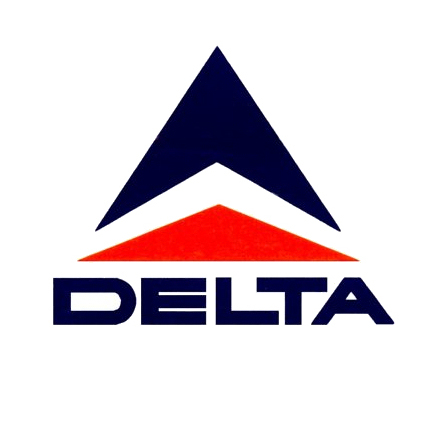Moderators: richierich, ua900, PanAm_DC10, hOMSaR
-

- Northwest1988
- Posts: 401
- Joined:
Boeing P-8 question.
Hello all,
Where I live we have a very large amount of P-8 touch and gos happen at our airport. Multiple times a week. We also have many 737-700/800 flights a week. My family and I live almost directly in the flight path and can hear and see just about everything that comes and goes.
I’ve noticed something interesting about the P-8 (military 737-800). When they are flying over the house they have a very distinct sound to them. It’s almost like a deep humming sound. I see many 737s flying for the airlines and they do not make the same sound as the P-8. They are much quieter. If you’re at the airport and watching them take off, the P-8s are again louder than the passenger 737.
I know they use the same engines, but is there another option that would make such a difference. Is it perhaps a different type of hush kit or lack of one?
Thank you all in advance!
Where I live we have a very large amount of P-8 touch and gos happen at our airport. Multiple times a week. We also have many 737-700/800 flights a week. My family and I live almost directly in the flight path and can hear and see just about everything that comes and goes.
I’ve noticed something interesting about the P-8 (military 737-800). When they are flying over the house they have a very distinct sound to them. It’s almost like a deep humming sound. I see many 737s flying for the airlines and they do not make the same sound as the P-8. They are much quieter. If you’re at the airport and watching them take off, the P-8s are again louder than the passenger 737.
I know they use the same engines, but is there another option that would make such a difference. Is it perhaps a different type of hush kit or lack of one?
Thank you all in advance!
Re: Boeing P-8 question.
Most landing noise comes from the airframe, not the engines. Flap settings can really change the noise level. With the P8 I would bet the noise is coming from all the extra antennas and other stuff hanging off the airplane that civilian airframes don't have.
-

- Northwest1988
- Posts: 401
- Joined:
Re: Boeing P-8 question.
Dalmd88 wrote:Most landing noise comes from the airframe, not the engines. Flap settings can really change the noise level. With the P8 I would bet the noise is coming from all the extra antennas and other stuff hanging off the airplane that civilian airframes don't have.
Good point!
Re: Boeing P-8 question.
Northwest1988 wrote:Dalmd88 wrote:Most landing noise comes from the airframe, not the engines. Flap settings can really change the noise level. With the P8 I would bet the noise is coming from all the extra antennas and other stuff hanging off the airplane that civilian airframes don't have.
Good point!
Wingtips are very different on P-8, no winglets as I recall.
Re: Boeing P-8 question.
Touch and Gos also require different engine settings than a normal take off for commercial aircraft.
Re: Boeing P-8 question.
Add to that that airlines use derated take off settings as often as possible (flex ?)
Re: Boeing P-8 question.
They left the "Chemtrail" switch in the "ON" position even after the tanks were empty. Improper landing checklist.
Re: Boeing P-8 question.
426Shadow wrote:They left the "Chemtrail" switch in the "ON" position even after the tanks were empty. Improper landing checklist.
May also be the flux capacitor...
Re: Boeing P-8 question.
The other thing to check is what is the typical landing weight of a P-8A vs. a commercial 737. The P-8A would have heavier empty weight but would carry fewer passengers. The landing weight (along with the additional drag from the antennas and various fairing bumps) would impact flaps and thrust settings and perhaps approach speed. All of which contribute to the noise.
bt
bt
Re: Boeing P-8 question.
My guess would be the fuel on board increasing the weight which means a higher approach speed. Most of your 737s are doing one full stop landing with not much fuel (since they're landing at their destination). Your typical P-8 pilot training flight is gonna fly somewhere until it's under it's max landing weight of 149,800 pounds, do some touch and gos, and then fly back to Jacksonville or Whidbey Island. Obviously that transit back requires thousands of pounds of fuel (maybe even over ten thousand) with the burn rate of 5000-6000 pounds an hour, so your Vref is gonna be a faster speed.
Could be wrong. I'm sure the flap settings for the P-8 match 737s more or less... Usually flap 30 landings but sometimes 40 and rarely 15. Someone mentioned derates which crews do utilize most of the time, though sometimes for proficiency crews will do a 27k takeoff. That wouldn't affect the speed it flies on approach though.
Don't think the closed bomb bay, various sensors, or raked winglets would change the noise considerably but I could be wrong
Could be wrong. I'm sure the flap settings for the P-8 match 737s more or less... Usually flap 30 landings but sometimes 40 and rarely 15. Someone mentioned derates which crews do utilize most of the time, though sometimes for proficiency crews will do a 27k takeoff. That wouldn't affect the speed it flies on approach though.
Don't think the closed bomb bay, various sensors, or raked winglets would change the noise considerably but I could be wrong
-

- INFINITI329
- Posts: 3013
- Joined:
Re: Boeing P-8 question.
zanl188 wrote:Northwest1988 wrote:Dalmd88 wrote:Most landing noise comes from the airframe, not the engines. Flap settings can really change the noise level. With the P8 I would bet the noise is coming from all the extra antennas and other stuff hanging off the airplane that civilian airframes don't have.
Good point!
Wingtips are very different on P-8, no winglets as I recall.
They have raked wingtips
Re: Boeing P-8 question.
DeltaMD90 wrote:Don't think the closed bomb bay, various sensors, or raked winglets would change the noise considerably but I could be wrong
If dalmd88 is correct in saying that some of the noise on landing comes from air frame noise, then the culprit for the higher noise levels may be the many antenas on the crown and belly of the aircraft. You can see at least half a dozen bump fairings on the lower lobe along with two hard point pylons on each wings. At landing, with the high angle of attack, I bet those bat wing antennas behind the observer windows can produce significant turbulence noise also.
bt
Re: Boeing P-8 question.
bikerthai wrote:DeltaMD90 wrote:Don't think the closed bomb bay, various sensors, or raked winglets would change the noise considerably but I could be wrong
If dalmd88 is correct in saying that some of the noise on landing comes from air frame noise, then the culprit for the higher noise levels may be the many antenas on the crown and belly of the aircraft. You can see at least half a dozen bump fairings on the lower lobe along with two hard point pylons on each wings. At landing, with the high angle of attack, I bet those bat wing antennas behind the observer windows can produce significant turbulence noise also.
bt
If airframe is the main culprit, I would imagine most of the difference being in the DIRCM in the back, below the tail. That is the main structural difference I can think of besides the raked wingtips. The ESM bulges I suppose are also large differences, in addition to all the antennas. IIRC, the engines have bigger bulges to account for the generators (double typical 737s due to the electrical requirements for future mission systems, namely the pod.) I don't recall if the engines do indeed have an extra bulge, or if the generators are simply bigger. Most P-8s in the states do not have the external pylons installed, only the installation mounts.
Without knowing much at all about what causes aircraft on approach noise, I still think the main culprit is the extra fuel on board. I have no idea how much the ZFW of a typical 737-800 is, but for the P-8A it varies mainly from sonobuoys or weapons, but your normal pilot trainer wouldn't have all that junk in it. So your ZFW would be like 113000 or 115000 or so pounds. As I mentioned before, however, most airliners are landing with close to minimum fuel, probably in the ballpark of 7000-8000 pounds. P-8s will often start bouncing after they get below their max landing weight of 149800, meaning they have in the mid 30000 pounds of fuel, quite above what an airliner would have full stopping. That increases the Vref a good amount, obviously leading to a higher thrust setting.
Another thing to consider would be flap settings for landing. Not sure about a typical 738 landing, but the vast majority of P-8 landings are at flaps 30 (much less are flaps 40 and even less flaps 15.) If airliners land at flaps 40, that would also change engine noise to some degree compared to a P-8.
Would be interesting to hear from a 738 pilot to see what flap setting, ZFW, and fuel they land with most of the time. I can say for a definite fact that unless the poster lives very close to KNIP or KNUW, the P-8 crews are gonna have much more fuel on board than the 737s landing
Re: Boeing P-8 question.
I wouldn't think the flaps wouldn't be much different. If they are coming at the same landing speeds, then the two main differences would be angle of attack and thrust setting. If thrust settings are different, then you may be able to hear the difference in pitch as the fans would be spinning at different rpms. Wind noise would be higher with higher aoa. But the two noise source would not be exclusive as one neccesitate the other.
bt
bt
Re: Boeing P-8 question.
If the difference is the deep humming sound is the difference then my guess would be different fan speeds.
bt
bt
Re: Boeing P-8 question.
With respect to the fuel weight differential, don't forget a passenger 737 has 200 x 200 lb (passenger +luggage) weight.
bt
bt
Re: Boeing P-8 question.
bikerthai wrote:I wouldn't think the flaps wouldn't be much different.
If IIRC (and this is why it would be great to have a 738 pilot chime in) many, most (?) 738 approaches are flaps 40, whereas almost every approach in the P-8 is flaps 30. That changes the Vref a good amount, around 10 knots. I can't begin to recall the N1 settings at flaps 30 vs 40, but I do remember the Vref being a lot different and the approach overall being slower and handling differently.
bikerthai wrote:With respect to the fuel weight differential, don't forget a passenger 737 has 200 x 200 lb (passenger +luggage) weight.
bt
True, but don't forget all the mission systems (large and all throughout the fuselage), the sonobuoy racks and launchers (even when empty), the weapon bay (even when empty,) and the forward and aft aux tanks (even when empty). How that all compares to lightly or fully loaded 738 is unknown to me, but it's not all just empty cabin in there.
Basically, higher landing weight (again, not sure of a P-8 mob flight ZFW vs 738 ZFW but I would be shocked that it would make up for an extra 20000-30000 pounds of fuel to return to KNIP or KNUW) plus flaps 30 (assuming airliners mostly use flaps 40) would increase N1 by an at least slight to moderate amount. Throw in possible airframe noise differences from your ESM sensors, EWSP in the back, raked wingtips, etc and we might have our answer
Re: Boeing P-8 question.
Am I not understanding it right? If the P-8A is heavier, why would they use flaps 30 instead of 40? Would that mean they are coming in at greater approach speeds? Or higher aoa? I am not familiar with the complexity of flap setting. Wouldn't the higher settings increase lift and reduce approach speed?
bt
bt
Re: Boeing P-8 question.
bikerthai wrote:Am I not understanding it right? If the P-8A is heavier, why would they use flaps 30 instead of 40? Would that mean they are coming in at greater approach speeds? Or higher aoa? I am not familiar with the complexity of flap setting. Wouldn't the higher settings increase lift and reduce approach speed?
bt
Higher flap settings increase lift, but there is a point where you're starting to add more drag than you're adding lift. IIRC it's up to flaps 15 you're adding a lot more lift, beyond 15 you're still adding more lift but the drag starts to really kick in. The P-8 can only land at flaps 15, 30, or 40.
15 is typically only used when there are gusty winds, during a single engine approach, or for training. It isn't used very much but crews occasionally do them for training. Couldn't tell you why flaps 25 isn't used for landing, only takeoff, but flaps 30 is used for the majority of landings, according to NATOPS (the flight manual) it is for "noise abatement" but it is also faster than flaps 40, which can be painfully slow.
Not sure about fuel flow between flaps 30 vs 40, on one hand you are at a slower speed so less fuel? But you are on the approach longer, so more fuel? Couldn't tell you.
Flaps 40 is often used, minus for training, for times when landing distance is a factor (lower Vref = less landing distance.) Flaps 40 isn't recommended for gusty conditions (use flaps 30 instead), and if it is gusty enough, consideration for flaps 15 is given. When doing an overweight landing for an emergency (with both engines), flaps 40 can lead to an uncomfortable margin between stall speed and overspeeding the flaps (167 knots), whereas flaps 30 has a more comfortable margin of 179 knots maximum.
Sorry I can't really pinpoint the answer to some of your questions more. That is how the P-8 is operated, but the exact reasons why for a lot of the nitty-gritty I do not know. I'm sure someone somewhere had a good reason, but often times it just evolves from common practice, how they did it at VP-30 (the squadron that trains new P-8 pilots), or because "that's how the airlines do it." It's still a relatively new plane and the procedures are still changing.
Re: Boeing P-8 question.
So, given that there are only three flap settings for landing and we are talking about the same airport, where the conditions are consistent for a regular 737 vs a P-8, then one can conclude that both planes are comming in at same flap setting for the most part. That then leads us back to aoa and thrust settings (because of weight and drag differences), both of which will impact noise.
bt
bt
Re: Boeing P-8 question.
bikerthai wrote:So, given that there are only three flap settings for landing and we are talking about the same airport, where the conditions are consistent for a regular 737 vs a P-8, then one can conclude that both planes are comming in at same flap setting for the most part. .
bt
Maybe? IDK that every individual airline prefers their pilots to come in at. I figure 30 but that could be different.
But yeah, I would think the higher fuel load of a P-8 is the main difference, as I said before. Until we get more info on their flap settings and typical ZFW/fuel at landing I think we are at a dead end.
Interesting discussion though
Who is online
Users browsing this forum: JayinKitsap, JeremyB and 23 guests




